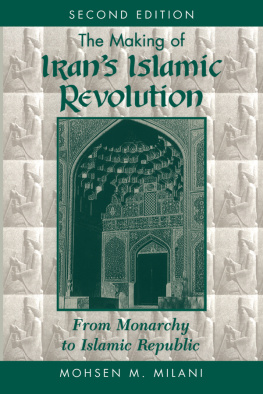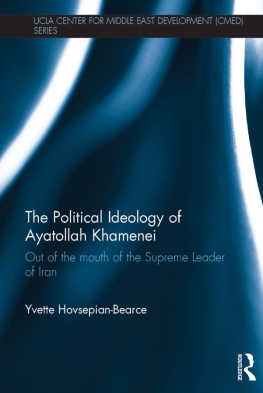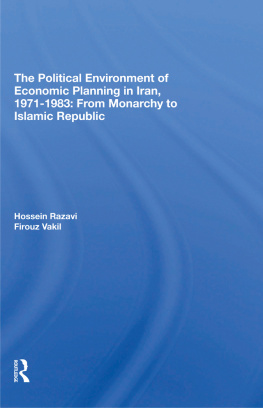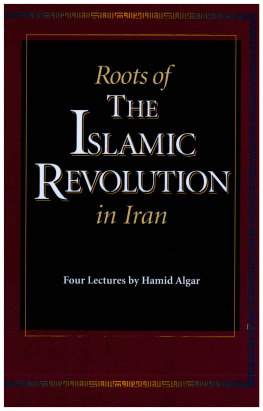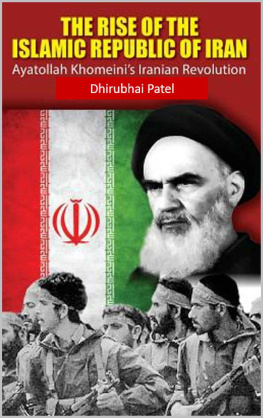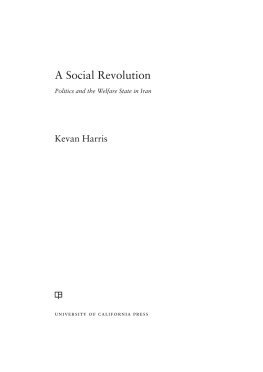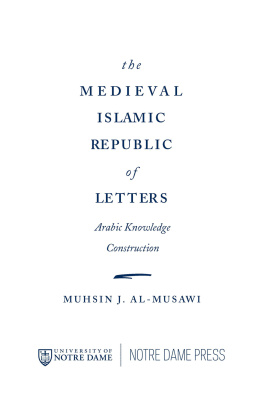The Making of Irans Islamic Revolution
First published 1994 by Westview Press
Published 2018 by Routledge
711 Third Avenue, New York, NY 10017, USA
2 Park Square, Milton Park, Abingdon, Oxon OX14 4RN
Routledge is an imprint of the Taylor & Francis Group, an informa business
Copyright 1988, 1994 Taylor & Francis
All rights reserved. No part of this book may be reprinted or reproduced or utilised in any form or by any electronic, mechanical, or other means, now known or hereafter invented, including photocopying and recording, or in any information storage or retrieval system, without permission in writing from the publishers.
Notice:
Product or corporate names may be trademarks or registered trademarks, and are used only for identification and explanation without intent to infringe.
Library of Congress Cataloging-in-Publication Data
Milani, Mohsen M.
The making of Irans Islamic revolution : from monarchy to Islamic
republic / Mohsen M. Milani. 2nd ed.
p.cm.
Includes bibliographical references and index.
ISBN 0-8133-8475-3. ISBN 0-8133-8476-1 (pbk.)
1. IranHistoryMohammed Reza Pahlavi, 19411979.2. Iran
History1979 I. Title.
DS318.M495 1994
955.053dc20
94-14600
CIP
ISBN 13: 978-0-8133-8476-4 (pbk)
In the memory of my mother, I dedicate this book to those who preach and practice nonviolence.
This book presents a comprehensive analysis of the internal (political, economic, and ideological) and external (U.S. policy) causes and consequences of Irans Islamic Revolution. It explains how and why an essentially nonviolent and popular movement overthrew Mohammad Reza Shahs apparently impregnable regime in 1979 and built upon its ashes a theocratic Islamic order, one that has changed both Irans destiny and the political landscape of the Islamic world.
In the second edition, I have not changed the conceptual framework outlined in the first edition for explaining the Islamic Revolution. Nor have I altered my original assessment of why the Shii fundamentalists, under the leadership of Ayatollah Ruhollah Mussavi Khomeini, defeated their opponents and established their rule.
The new edition contains, however, some revisions and additions, which are often based on the newly released information and documents about Iran. Whereas a few sections have been totally rewritten, many others are now considerably shorter. In some sections, such as the ones on the Teheran hostage crisis and the Iranian involvement in the Kuwaiti crisis, I have included the information from the many interviews I conducted with the officials of the Islamic Republic of Iran during the past three years.
Two entirely new chapters have been added to inform readers of the latest developments in Irans domestic and foreign policies. One deals with the challenges that the Islamic Republic faced in the 1980s, including the bloody Iraq-Iran war, which ended in 1988. The other is devoted to the domestic and foreign challenges that President Ali Akbar Hashemi Rafsanjani has confronted during the past five years, including a section about Irans policy of active neutrality during the Kuwaiti crisis or the Second Persian Gulf War.
Since the dawn of the Islamic Revolution in 1979, Teheran and Washington have been engaged in what Professor R. K. Ramazani calls mutual satanization of each other. The essential ingredients of this campaign are excessive exaggeration of the perceived negative aspects of the other side plus dubious information, disinformation, mistrust, crude jingoism, and paranoia. The insatiable appetite of the mass media to sensationalize certain adventuristic actions by Iran, such as the Teheran hostage ordeal, has certainly helped perpetuate the prevalent atmosphere of mistrust. Given this inhospitable atmosphere, fiction and facts about Iran have often been confused in the United States. If we are to change this regrettable state of mistrust and paranoia, we must move in an entirely different path: the path of understanding what actually happened when the Shah was overthrown and what the Islamic Republic has done to make Iran Islamic. The ultimate goal of this book is to render the Islamic Revolution and its idiosyncrasies and peculiarities comprehensible to the U.S. reader.
I have tried to achieve this goal by presenting a fair analysis of the revolution, recognizing that total objectivity is a myth some of us take too seriously. In revising this book, I constantly reminded myself of my biases and genuinely tried to eliminate or minimize them. My hope was to produce a book that neither defends and glorifies nor defames and sensationalizes the Islamic Revolution. You will be the judge.
Mohsen M. Milani
Making appropriate revisions and updating this book was more time-consuming and challenging than what I first imagined when I agreed to undertake the task. However, the invaluable guidance, support, and encouragement I received from my colleagues and dear friends made the completion of this job possible and gratifying.
Unlimited gratitude goes to my beloved father, who has been the most important source of inspiration for all my education. I am grateful to my brothers, Hossein and Hassan, and to my sister, Farzaneh, for their constant encouragement.
I am indebted to the colleagues who used this books first edition as required reading in their courses. They and some of my own students made thoughtful suggestions to improve its quality.
I feel blessed to have received the generous support of Bahman Bakhtiari, Hoshang Chehabi, Manocher Dorraj, Michael Gibbons, Thomas Greene, Jo-Anne Hart, Farhad Kazemi, Abbas Milani, R. K. Ramazani, and Reza Sheikholislam. I express my sincere gratitude to them all.
Special thanks go to Marianne Bell and Carole Rennick from the University of South Florida for completing the word processing of a good portion of the manuscript; to Zhand Shakibi, one of my best students, for helping with the Chronology; to Helen Snively for her proficient copyediting and suggestions about style; to Karl Nayeri for assistance with the cover design; to Barbara Ellington, senior acquisitions editor at Westview Press, for good-humoredly seeing to it that I completed the project as scheduled; to Sarah Tomasek for her excellent copyediting; to Libby Barstow, senior production editor, for her valuable help in the production of the book; and to the staff and owner, my friend Jeff Babcock, of Joffreys Cafe, for allowing me to use the cafe, where I did some editing of the manuscript, as my second office.
Finally, I would like to thank my wife, Ramak, whose wisdom and love have enriched my life. She did much of the research for the last two chapters. Having completed her university education under the Islamic Republic, she made eloquent observations about life in Islamic Iran and thus strengthened the analysis presented in the second half of the book.
If there are any merits to this book, I share them with the individuals mentioned above. But I alone accept responsibility for its content and deficiencies.
M.M.M.
The terms are defined here only in the context used in the book.
| Asnaf | Guilds (sing.: senf) |
| Auqaf | Charitable-religious endowments (sing.: vaqf) |
| Ayatollah | Revered title in Shiism conferred on a recognized mujtahed with some following |

